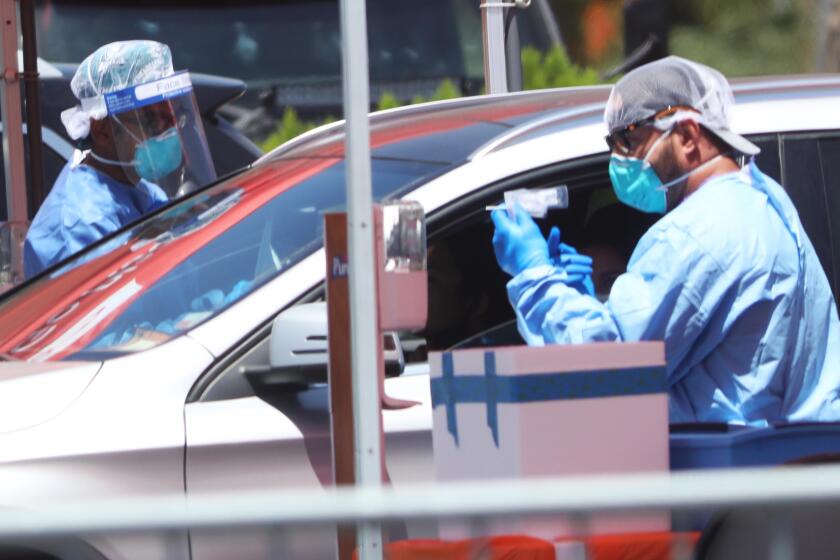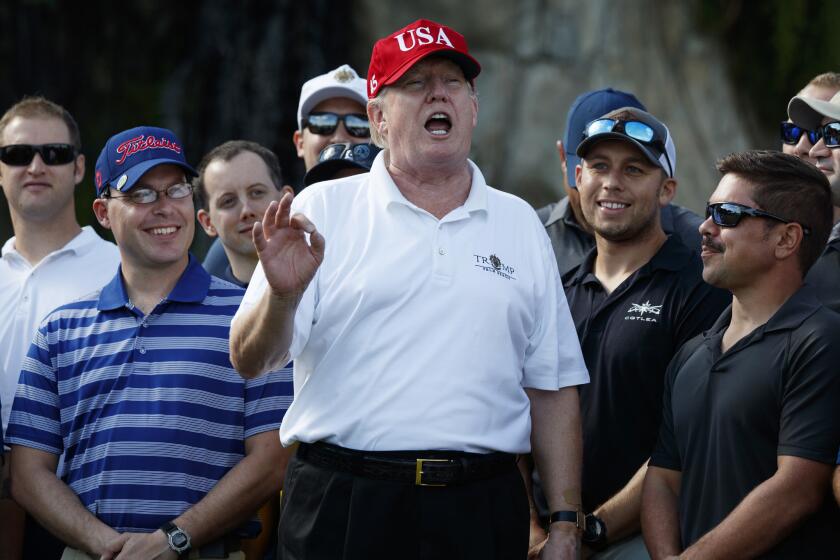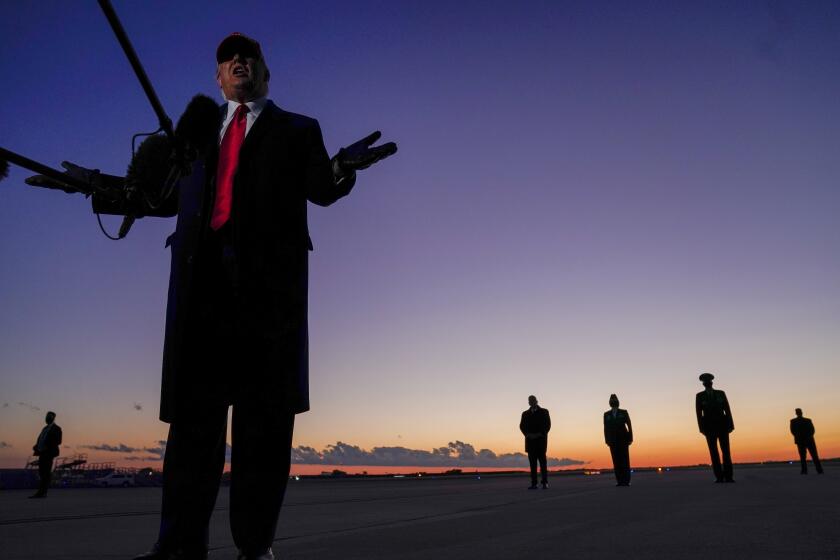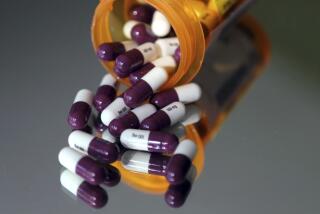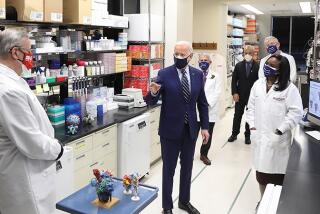Column: Pfizer, Moderna expect billions in profits from COVID vaccines. That’s a scandal
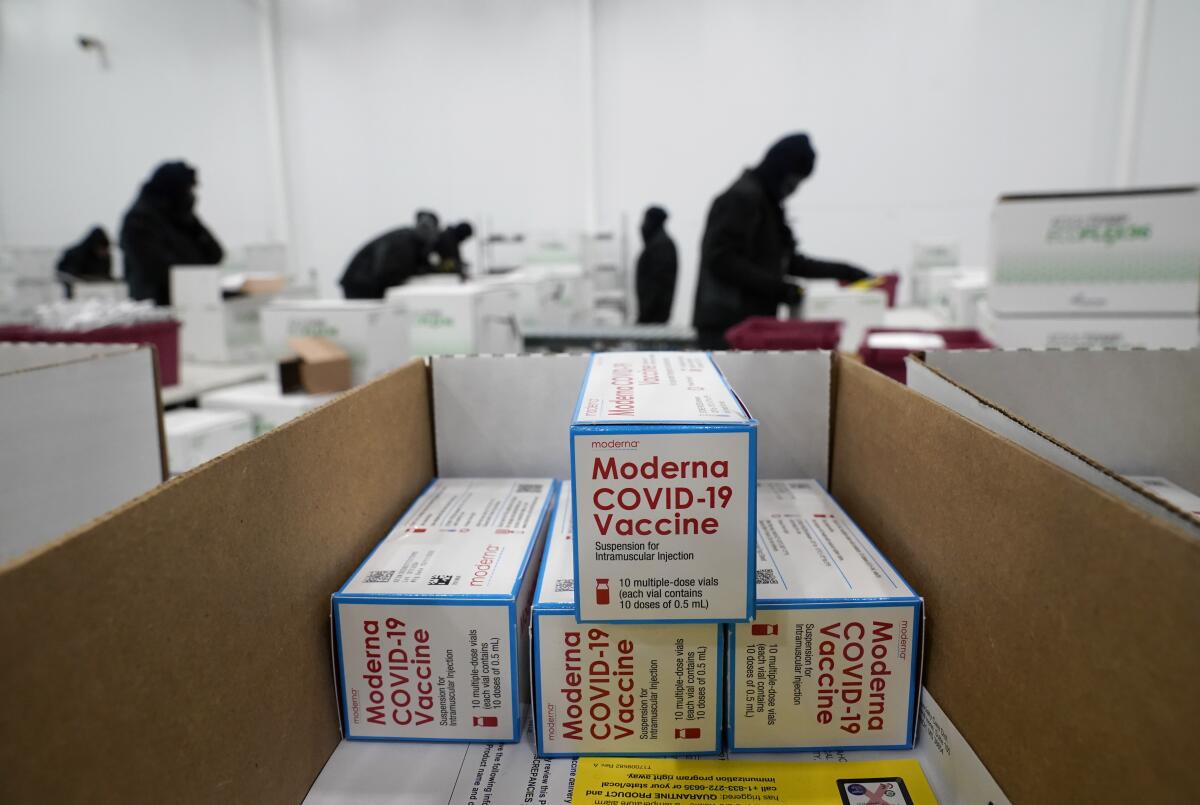
- Share via
The pharmaceutical industry, which has ranked near the bottom in its public reputation for what seems like decades, is currently entering a “can do no wrong” phase.
That’s because of its success in developing COVID vaccines — not one, but several.
The vaccines being rolled out by Pfizer, Moderna, AstraZenica and other firms lack some of the qualities that have brought Big Pharma executives to the witness tables of congressional committees.
Moderna’s announcement to not enforce patents during the pandemic might be enough to get good press, but it isn’t enough to make sure people will have access to this vaccine at an affordable price.
— Doctors Without Borders
They’re not copycat formulas designed to artificially extend company patents or hamstring generics producers. They’re not priced in the extortionate stratosphere. They’re known to work better than any alternatives, rather than being just as good at therapies or drugs already on the market.
Yet the manufacturing and distribution practices of Pfizer and Moderna particularly — they’re the first companies with vaccines approved in the U.S. thus far — are already coming into question, and rightly so.
The companies stand to earn billions of dollars in profits from their COVID vaccines this year, according to investment analysts’ projections. Since it’s unlikely that the vaccines will provide 100% cures or eradicate the virus causing the disease, there will be more profits in later years.
While no one is saying that the companies should collect no profit at all from the COVID vaccine, that leaves open the question of how much is enough? Neither Pfizer nor Moderna replied to my specific questions about their revenue or profit expectations from the vaccine. More on that below.
More than just money is at issue. Pfizer and Moderna also claim the rights to vast amounts of intellectual property that will be useful, if not necessary, for others to develop vaccines in the future.
Moderna has said it will not enforce its patents on the vaccine for the duration of the pandemic, but it hasn’t made the same commitment for the intellectual property connected with its messenger RNA technology, the key to the COVID vaccine.
The federal government has poured billions into COVID-19 vaccine research, but will Americans reap the profits?
That announcement drew fire from healthcare advocacy groups. Doctors Without Borders, for example, called on Moderna and other drug companies “to not enforce any intellectual property (IP) on COVID-19 tools at any point — not just patents — since know-how, technology, and other components of vaccine development and manufacturing can still be protected under IP rules.”
As long as they remain in effect, the organization said, those rules will limit the availability of vaccines all around the world.
“Moderna’s announcement to not enforce patents during the pandemic might be enough to get good press, but it isn’t enough to make sure people will have access to this vaccine at an affordable price,” the organization said.
Pfizer hasn’t made any commitment on its vaccine patents or IP.
I’ve written already about the stranglehold that Pfizer and Moderna have maintained on the manufacturing of their COVID vaccines, even though American taxpayers have paid billions of dollars for the basic research and early development of the technology.
The sad harvest of this system is already visible in the rollout of the vaccines, which has happened far slower than even the federal government’s most pessimistic projections.
Some of the fiasco is due to patchy distribution of doses already manufactured; blame for that belongs to the feds. But it’s also evident that the pace of manufacturing hasn’t met demand. And that’s the drug companies’ responsibility.
On Sunday, Moncef Slaoui, the scientific head of the government’s Operation Warp Speed vaccine program, proposed stretching the supply of the Moderna vaccine by cutting the recommended dose in half for people between the ages of 18 and 55. That means “achieving the objective of immunizing double the number of people with the doses we have,” he said.
Pfizer and Moderna have talked positively and enthusiastically about the deals they’ve made with other manufacturers to produce their vaccines. But the federal government has had the opportunity to step up with its own manufacturing deals, circumventing patent or licensing claims.
President Trump has screwed up the vaccine distribution -- just like everything else.
The Bayh-Dole Act of 1980 gives the government “march-in” rights to issue licenses on federally funded patents if it believes the corporate patent holders aren’t acting in the public interest.
Another federal law known as Section 1498 gives the government immunity from patent claims when it determines that infringement serves the public good; the patent holder is entitled to “reasonable compensation.”
As Tricia Neuman and colleagues at Kaiser Family Foundation reported in 2019, the government can authorize production of an equivalent, lower-priced product provided the patent holder receives royalties.”
Section 1498 hasn’t been used for drugs in several decades but has been used for other products. George W. Bush wielded it as a threat to force Bayer to lower the price of the antibiotic Cipro during the anthrax scare of 2001.
But there’s no evidence that President Trump even threatened, much less invoked, Section 1498 to secure vaccine supplies or force down the price that Pfizer and Moderna are charging the government for the hundreds of millions of doses they’re providing by government contract.
Although the vaccine is to be delivered free to Americans, the government is paying what looks like top-dollar for the drugs. Pfizer’s government contract for 100 million doses sets the unit price at about $20 per dose. Moderna’s two contracts for 100 million doses each are set at about $15 per dose.
The actual production cost is much less. Pfizer’s profit margin on its vaccine will be 60%-80%, Geoffrey Porges of SVB Leerink has estimated.
That’s plainly excessive for a product with a guaranteed worldwide demand, especially one based heavily on government investment.
Pfizer boasts that it accepted no development funding from Operation Warp Speed for its vaccine (though its $1.95-billion manufacturing contract from the program certainly reduced its risk).
Science denial has long been at the center of GOP politics, but this year it killed tens of thousands of people.
But federally funded basic and applied research at the National Institutes of Health, the Defense Department and academic labs created the foundation for the mRNA technology. In fact, almost no drugs reach market in the U.S. without such funding.
Federal funding of the Moderna effort has been even deeper: The company collaborated directly with Barney Graham of the NIH in developing its vaccine and received federal grants totaling nearly $1 billion during the development and trial stage.
“We totally paid Moderna’s research and testing costs, so they had nothing to recover,” says economist Dean Baker of the Center for Economic and Policy Research, who follows the folly of U.S. patent and licensing rules closely.
Although Pfizer paid its own development costs, its partner in the vaccine project, Germany-based BioNTech, got $600 million from the German government.
“If Moderna ends up selling 500 million doses, say, at an average price of $15, they are pocketing $7.5 billion on a project where they effectively put up no money and took no risk,” Baker observes. “Figure a comparable number for Pfizer, although it may have coughed up around $750 [million] in research and trial costs.”
Both companies have been boasting about the financial potential of their vaccines. Wall Street estimates that the companies will collect $32 billion in revenues from the vaccines this year alone. Moderna has said it expects $4 billion in cash flow to be generated from September 2020 through the end of this year, it said in an earnings presentation in October.
“Moderna retains worldwide rights to develop and commercialize mRNA-1273 [the COVID vaccine],” on which it faces “no profit sharing with a partner,” the company said — unlike Pfizer, which will share its profits with BioNTech.
Pfizer has been unapologetic about its gains from the virus. Asked in July by Barron’s whether the company should abjure any profits, CEO Albert Bourla called that viewpoint “very wrong.... You need to be very fanatic and radical to say something like that right now ... Who is finding the solution? The private sector found the solution for diagnostics, and the private sector found the solution for therapeutics and is along [the] way to find more solutions for therapeutics and vaccines.”
The notion that the “private sector” achieved all this entirely on its own is the bedrock of the pharmaceutical industry’s position that it deserves everything it can get.
But it’s wrong. None of its diagnostics, therapeutics or vaccines would exist if the U.S. and other developed countries hadn’t funded research before the companies stepped in to exploit it. The role of public funding in drug development has been an open secret for decades.
Its role in developing the COVID vaccines shouldn’t escape scrutiny — and the private sector should be made to pay it back. Patent and IP rights are worth billions, too, and the taxpayers should get their share.
More to Read
Inside the business of entertainment
The Wide Shot brings you news, analysis and insights on everything from streaming wars to production — and what it all means for the future.
You may occasionally receive promotional content from the Los Angeles Times.

